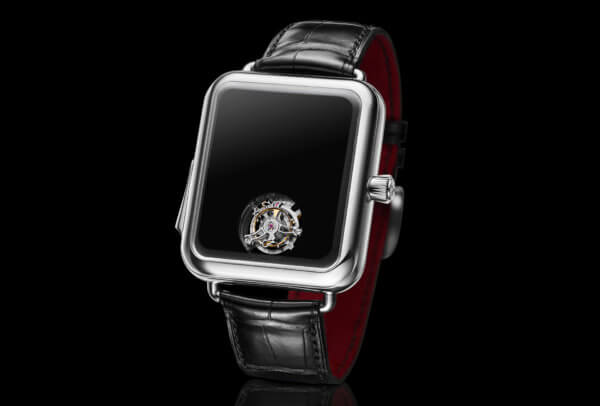When in 2016 the SIHH decided to open its doors to independent brands by creating the Carré des Horlogers, the mood was far from festive. A year earlier, just a few days before the fair opened, Switzerland’s central bank had unpegged the franc from the euro. As the value of the Swiss currency soared, so did the price of Swiss watches (and other products) at export, heralding a lean three years for the industry. In this context, the arrival (which had been on the cards for a while) of what many were calling “new watchmaking” couldn’t have come at a better time. It was a widely-held view that this was a far more dynamic segment than the long-established historic Maisons, because these brands weren’t so tied to a signature aesthetic or mechanical jurisprudence. Horology’s hellions were the ones to put some colour back into a wan-looking sector whose creativeness, at that time, revolved around vintage-inspired designs.
Reinventing the crown
Four years on, and no-one would dream of questioning independents’ presence at SIHH. Not only has their number almost doubled – from 9 to 17, on an almost equal footing with the 18 historic Maisons –, they are still blowing a breath of fresh air through the event. While most of the big names exhibiting this year came with some interesting new watches, Carré des Horlogers was still the place to go for the biggest surprises. Or rather the ones least afraid to break the Fine Watch mould.
First example with Urwerk: set up in 1997 by designer Martin Frei and watchmaker Felix Baumgartner, the brand made a name with its satellite complication and wandering hours display. But it’s in a different area altogether that the two have caught our attention: the crown. A necessary adjunct but awkward to use in its traditional form, the crown has taken something of a back seat compared with other mechanical parts. Few brands have made the effort to propose an alternative to this nineteenth-century invention, even though today’s crowns are expected to multi-task: winding the movement, setting the hands, adjusting complications, etc. Enter Urwerk, whose UR-111C features a cylindrical crown flush with the top of the case, above the movement. This makes it significantly easier to use: to wind the movement, just slide your finger across this grooved roller. For it to work, Urwerk had to develop a completely novel system of miniature gears, complex articulations and intermediate wheels. Flipping out a lever on the side of the case switches to time-setting mode, again by rolling the crown. It’s that easy, plus no more split nails.
Breaking taboos
In a similar vein, Ressence pushes the envelope even further. The brainchild of Benoit Mintiens, an industrial designer based in Antwerp, Belgium, the brand’s self-declared aim is to “challenge the status quo of mechanical watchmaking”. Something it is doing very well. After developing and patenting the Ressence Orbital Convex System (ROCS) – subdials set into a disc, revolving one around the other and contained in an oil-filled capsule –, this year the brand presented its e-Crown, a small, electronic module that creates a new function for a mechanical movement. For the Swiss, it’s a taboo subject: ever since the “quartz crisis” that came close to decimating the industry, electronic and mechanical have sat on opposite sides of a very high fence. There have been next to no attempts to end the unspoken understanding that “ne’er the twain shall meet”, with the notable exception of Jaeger-LeCoultre’s AMVOX2 DBS Transponder – launched in 2008, it remotely opened the doors of the Aston Martin DBS –, and more recently (2013) the EMC by Urwerk and its “performance indicator”. Ressence’s e-Crown automatically sets the Type 2 to the right time via an app. It’s simple and effective, all the while preserving the watch’s mechanical nature.
Constructive provocation
H. Moser & Cie is equally adept at colouring outside the lines. Its CEO, Edouard Meylan, delights in taking humorous jabs at a certain hypocrisy that reigns within the watch industry. One of his most famous stunts was the 2016 launch of the Swiss Alp Watch, an entirely mechanical timepiece with an almost identical design to the Apple Watch. Meylan’s message: mechanical will never die. In 2019 the ebullient executive is stirring it up some more with the Swiss Alp Watch Concept Black, whose entirely black dial resembles a certain smartwatch on standby. Devoid of hands, markers and, frankly, any kind of display, there is nothing to see but a flying tourbillon at 6 o’clock. The time is given by activating the slide on the side of the case to trigger a minute repeater, considered to be the quintessence of horological complications. A huge hit.

We haven’t even mentioned Christophe Claret, which uses a Dyneema nanofibre cable for its constant-force device. Or DeWitt, which has replaced gears by a 192-component chain to rotate a globe. Whether it’s about innovation, provocation or going against the grain, Carré des Horlogers is brimming with examples that help advance the state of the art. Or give it a good shake-up! The spice of horological life, “new watchmaking” does everything we expect it to do. The industry wouldn’t be the same without it.
















